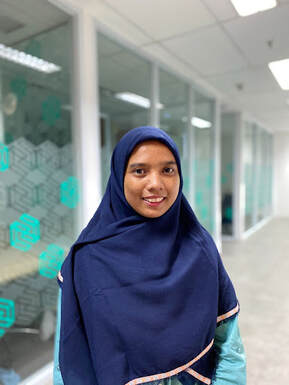|
10/19/2022 0 Comments So You Want to Be a Data Scientist?Author: Celine Nugroho Editor: Kendra Loedige In 2001, the term “data science” was used for the first time to define a new combination of statistical and computer sciences. Ever since then, the emerging field has seen a dramatic increase in interest. Virtually every industry nowadays is clamouring for a data scientist: data scientists enable companies to make better business decisions by extracting actionable insights from data. Despite the high demand, the percentage of female data scientists remains very low. A 2021 Harnham report divulges that only 27% of US data and analytics professionals are women. This number is bound to be lower in developing countries, where women often get limited to no access to STEM-based education – a crucial foundation for those looking to pursue data science. But what is it really like as a woman in data science? Nadya Asanul Husna and Labibah Alya, data scientists associated with Data Science Indonesia, provide insight into the inner workings of a data-driven STEM career. Photo of Nadya (Credit: Nadya Asanul Husna) How did you become interested in data science? Nadya: Ever since I was in high school, I was passionate about statistics. This led me to major in statistical mathematics, where I was first exposed to data science. What first piqued my interest about the field was the vast interdisciplinary world I found within it. As time went by, I was also interested in how data science enables people to become powerful decision makers. Highly accurate predictions are now made possible through studying trends in existing data. Alya: I also got to know data science during my university years. I was very fascinated with it — in fact, I took up all available courses related to big data and its applications in multiple industries within my major. What does a day in the life of a data scientist look like? Alya: Lots of meetings, graphs, and charts! I work closely with the business sector of my company, so these meetings are mostly to discuss what would work best business-wise and data algorithm-wise. A look inside company meetings (Credit: Nadya Asanul Husna) Nadya: I spend most of my time combing through manually inputted data, fixing them up so the data can be processed beneficially. This ties into product research and business model predictions, so data science is really a field that extends across disciplines. Alya: True. Sometimes it feels like working in data science is mostly preparing the data! It takes a while to turn raw data, which is often mixed in with a lot of unnecessary components, to good data you can analyse. Have you faced any struggles throughout your career? Nadya: At first, having to study a lot of programming languages seemed very hard. I tackled this by learning through various online courses. I’ve also found an encouraging learning community within Data Science Indonesia, which I’m very thankful for. I also happen to be the only woman at work. Initially, I was worried about this, but I am blessed with supportive coworkers. One thing I especially love is our group discussions, where we discuss ongoing projects and add to each other’s knowledge horizons. Alya: I feel like there’s still a lot of misconception surrounding what data scientists do. For example: I often encounter people expecting unrealistic solutions to their problems as they equate data scientists to psychics due to our ability to make data-based predictions. There’s also the problem of companies who aren’t based in technology demanding for an instant modernised shift — without the right preparation for it. How exactly are we supposed to build without the necessary tools? What’s your favourite part about working in data science? Nadya: For me, it’s helping people to learn more through concrete data and facts. A common problem I’ve seen is companies utilising outdated systems in this digital age. As data scientists, we enable companies to gain valuable insight for future initiatives through computerised models. Alya: Same here! Having your work benefit others is definitely a job highlight. I also really like how most of my coworkers are the same age as I am. We’re all driven by the same passion, same need to learn. I personally find it as something that contributes towards a comfortable professional environment. With the rise of data science, what’s an avenue of progress you’re looking forward to seeing? Nadya: I’m definitely excited for how data will launch the medical industry to new heights. Curing diseases by just observing data derived from DNA prediction—what an innovation! Alya: Many companies nowadays are starting to use their data in a meaningful way. This heightens awareness regarding data analytics, and opens up conversations about how data scientists can be vital decision makers. Hopefully, this leads to increasing data science talent in Indonesia (especially enthusiastic about the idea of more female data scientists!) Any advice for young women who would like to be data scientists? Alya: Passion makes anything possible. Nadya: Agreed. Even if data science is challenging to pursue, there are plenty of free resources available for budding data scientists: online courses, Medium articles, and much more. Never let yourself be limited by fear, and always enjoy the learning process. Special thanks to Kak Nadya and Kak Alya! Learn more about Data Science Indonesia here.
0 Comments
Your comment will be posted after it is approved.
Leave a Reply. |
CONNECT WITH USSUBSCRIBE |
The Scientista Foundation, Inc. All Rights Reserved © 2011-2021 | Based in NY | [email protected]
The Network for Pre-Professional Women in Science and Engineering
The Scientista Foundation is a registered 501(c)(3) -- Donate!
The Network for Pre-Professional Women in Science and Engineering
The Scientista Foundation is a registered 501(c)(3) -- Donate!





 RSS Feed
RSS Feed